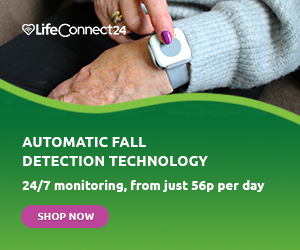This article was contributed by Kate Macmorn of the American Medical Research Institute (AMRI)
Basic Life Support (BLS) and Safety Response are essential skills that can save lives in emergencies. BLS refers to basic medical procedures to sustain a patient’s life until emergency professionals can administer advanced medical care.
On the other hand, safety response involves taking initial steps to ensure the safety of oneself and others in emergencies.
Learning these skills is crucial as emergencies can happen at any time and place, and having the knowledge and ability to respond quickly and effectively can make the difference between life and death.
This article will explore the importance of BLS and safety response and the benefits of obtaining BLS certification. In addition, we will also discuss the fundamental techniques involved in BLS and safety responses and how you can use them to assist in emergencies immediately.
Lastly, we will highlight the importance of staying calm and composed and how BLS certification can help individuals develop the necessary skills and confidence to respond appropriately.
Importance of Basic Life Support
BLS is the immediate assistance given to someone experiencing a medical emergency, including techniques such as CPR, defibrillation, and airway management.
Furthermore, BLS is critical to learn about, especially in cardiac arrest, drowning, choking, and other life-threatening emergencies. Knowing Basic Life Support (BLS) is crucial as it can help save lives in emergencies.
When a person experiences a medical emergency, every second counts. The first few minutes after the onset of an emergency are crucial, and immediate action can make all the difference. If proper BLS techniques happen in those crucial moments, it can significantly increase the chances of survival and reduce the risk of long-term damage.
Additionally, knowing BLS can help reduce anxiety and increase a person’s confidence if an emergency occurs. It can also prepare individuals to take prompt action and prevent the situation from worsening.
Knowing how to provide BLS can make an individual feel empowered and more in control during an emergency.
In some cases, employers require their staff to obtain BLS certification, especially in fields that involve working with the public or in high-risk environments. For instance, healthcare professionals, lifeguards, firefighters, and police officers typically have a career requirement to have a BLS certification.
Importance of Safety Response
Knowing proper safety response techniques is crucial to ensuring the safety of oneself and others in emergencies. Safety response involves immediate actions to prevent further harm or injuries in emergencies. Some situations where safety response is essential to include are natural disasters, fires, accidents, and terrorist attacks.
One of the main reasons why knowing proper safety response techniques is essential is because it can prevent injuries and save lives. In emergencies, the actions taken in the first few minutes are critical and can determine the situation’s outcome.
Proper safety response techniques such as evacuating the area, administering first aid, or contacting necessary services can make all the difference.
Finally, proper safety response techniques can help organizations comply with regulatory requirements and prevent legal liabilities. For instance, workplace requirements often include emergency response plans and regular drills to ensure employees are prepared for emergencies.
Benefits of Obtaining BLS Certification
Obtaining Basic Life Support (BLS) certification can benefit individuals in personal and professional settings. Here are some of the benefits of obtaining BLS certification:
- BLS certification can improve an individual’s confidence and preparedness in responding to emergencies. Knowing how to perform life-saving techniques such as CPR, defibrillation, and airway management can help individuals feel more empowered and in control in emergencies.
- BLS certification is often a requirement for healthcare professionals, first responders, and other related professions. BLS certification can open up better career opportunities, including promotions and higher pay.
- BLS certification can enhance an individual’s CV and demonstrate their commitment to public safety and willingness to take on additional responsibilities.
- BLS certification can help individuals respond effectively in emergencies, reducing the risk of injuries or fatalities. It can also help individuals take immediate action and prevent the situation from worsening.
- BLS certification can enable individuals to participate more actively in their community by volunteering as first responders or emergency medical technicians.
Ultimately, obtaining a BLS certification is a valuable investment for individuals, organisations, and society.
Do I Need BLS Certification?
Whether you need a Basic Life Support (BLS) certification depends on your profession or personal situation. BLS certification is often required if you work in healthcare, emergency response, or other related fields.
Similarly, obtaining BLS certification is highly recommended if you volunteer or frequently interact with individuals who may require emergency medical assistance.
However, even if you are not in a profession requiring BLS certification, learning these life-saving techniques can still be valuable and give you the confidence and knowledge to respond effectively in emergencies.
Ultimately, obtaining BLS certification will depend on your circumstances and goals.
Fundamental Techniques of BLS
The fundamental techniques of Basic Life Support (BLS) include chest compressions, rescue breaths, and defibrillation. Chest compressions involve pressing down on the chest of the individual experiencing a cardiac arrest at a rate of 100 to 120 compressions per minute.
Rescue breaths involve providing oxygen to the individual by sealing their nose and mouth and providing breaths at one breath every six seconds. Defibrillation involves using an automated external defibrillator (AED) to deliver an electric shock to the individual’s heart. This action works to restore its normal rhythm.
Other essential techniques of BLS include checking for responsiveness, calling for help, and clearing the airway. Checking for responsiveness involves gently shaking the individual and calling out their name to see if they respond.
Calling for help involves activating the emergency medical services (EMS) or asking someone nearby to do so. Clearing the airway involves removing any obstructions blocking the individual’s airway.
Knowing these techniques will be highly impactful if you ever come up against an emergency in which these critical tools are necessary.
Fundamental Techniques of Safety Response
The fundamental techniques of safety response involve taking immediate actions to prevent further harm or injuries in emergencies. These techniques include evacuating the area, administering first aid, and contacting emergency services.
Evacuating the area involves safely and quickly moving individuals from the danger zone to a safe location. This technique is critical in fires, explosions, and natural disasters.
Administering first aid involves assisting injured individuals until medical professionals arrive. This administration may include performing CPR, applying pressure to stop bleeding, and providing primary wound care.
Contacting emergency services involves calling 911 or the local emergency number to request assistance from police, fire, or medical services. Accurate information about the situation and the location can help emergency responders arrive quickly and effectively.
These activities will help you get through scary and stressful events safely and securely.
Staying Calm in Emergency Situations
Staying calm in emergencies is crucial for several reasons. Firstly, panic can cause people to make poor decisions and take unnecessary risks, worsening the situation. In contrast, staying calm allows individuals to think clearly and take appropriate actions to address the emergency.
Secondly, remaining calm can help to prevent others from panicking. People tend to look to others for guidance and reassurance during emergencies, so remaining calm can help provide stability and confidence to those around you.
Thirdly, staying calm can help reduce stress and prevent physical symptoms such as rapid breathing and elevated heart rate. This mentality can help individuals to maintain focus and energy levels for a more extended period, allowing them to manage the situation better.
It’s best to stay as calm as possible in these situations. Therefore, remember to take deep breaths, focus on the task, and talk in even tones. It’s best to avoid getting into a state of panic, as that can cause the opposite effect.
Final Thoughts
A Basic Life Support (BLS) certification can provide individuals with essential life-saving skills and knowledge. By mastering fundamental BLS techniques such as chest compressions, rescue breaths, and defibrillation, individuals can respond effectively to medical emergencies, increasing the chances of survival for those in need.
Additionally, BLS certification can be a requirement for individuals working in healthcare or emergency response fields and is highly recommended for those who frequently interact with individuals who may require emergency medical assistance.
Moreover, BLS certification can provide individuals with confidence and peace of mind knowing they have the skills and knowledge to respond in emergencies. It is an investment in oneself and the safety of others.
Overall, obtaining a BLS certification is a valuable and worthwhile pursuit for anyone who may encounter emergencies in their personal or professional lives. The ability to provide life-saving care can significantly impact the well-being and outcomes of those in need.
Peace of Mind from a Personal Alarm
In an emergency, it’s important that help can be arranged as soon as possible. A personal alarm is the ideal solution. When help is needed, simply press the button on your alarm pendant or base unit and an alert will be sent to the LifeConnect24 Response Team. Our team will proceed to alert emergency contacts and, if medical attention is required, the emergency services.
To find out more about the LifeConnect24 personal alarm service, get in touch with our helpful team on 0800 030 8999 or check out our product pages.
About the Author
Kate Macmorn is the Communications Director for the American Medical Resource Institute, where they’ve trained over a million healthcare professionals to study for, earn, and maintain life support certifications that allow them to better respond to cardiac emergencies. When not in the office, you can find Kate practicing her tennis skills. She also frequents live music venues and is always looking for her next creative hobby.



Leave A Comment